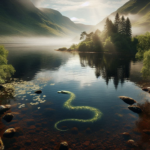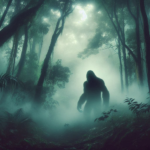Introduction
In the remote expanses of the Pacific Ocean, amidst the isolation of Easter Island (Rapa Nui), stand the silent sentinels of a lost civilization—the Moai statues. These massive stone figures, with their imposing visages and enigmatic origins, have fascinated and perplexed explorers, archaeologists, and historians for centuries. As symbols of an ancient culture that thrived in splendid isolation, the Moai statues raise profound questions about the history, society, and enduring mysteries of Easter Island.
Historical Background
Discovery and Early Exploration
Easter Island, known as Rapa Nui to its indigenous Polynesian inhabitants, was first encountered by Europeans on Easter Sunday in 1722, hence its name. The island, located over 2,000 miles off the coast of Chile, is renowned for its stunning natural beauty and the enigmatic Moai statues that dot its landscape.
The Origin of the Moai
The Moai statues are believed to have been created by the early inhabitants of Easter Island, known as the Rapa Nui people. Carved from volcanic tuff between 1400 and 1650 AD, these monolithic figures range in height from a few feet to over 30 feet and were placed atop ceremonial platforms called Ahu.
The Moai Statues: Architecture and Design
Characteristics of the Moai
The Moai statues exhibit distinctive features that reflect the artistic and cultural practices of the Rapa Nui civilization:
- Monolithic Sculptures: Carved from a single piece of volcanic tuff, each Moai statue is a testament to the craftsmanship and dedication of its creators.
- Facial Features: The statues typically depict elongated faces with broad noses, prominent brows, and deeply set eyes, often adorned with coral eyes and pukao (topknots) made from red scoria stone.
- Symbolic Meaning: Scholars believe that the Moai represented deified ancestors or important tribal leaders, serving as repositories of spiritual power (mana) and guardians of the community.
Engineering Feats and Construction
The construction of the Moai statues involved intricate engineering techniques and communal labor:
- Quarrying and Carving: The Rapa Nui people quarried the volcanic tuff from the slopes of Rano Raraku, a volcanic crater on Easter Island. The statues were then carved using stone tools and transported overland to their designated Ahu platforms.
- Transportation and Erection: Scholars debate the methods used to transport the statues, suggesting techniques involving log rollers, sledges, and human labor. Once at the Ahu, the Moai were erected upright and adorned with eyes and pukao.
The Decline of the Rapa Nui Civilization
Environmental and Societal Challenges
Easter Island’s fragile ecosystem and limited resources contributed to the decline of the Rapa Nui civilization:
- Deforestation: The Rapa Nui people relied heavily on palm trees for timber, rope, and canoe building, leading to widespread deforestation and soil erosion.
- Resource Depletion: Overexploitation of natural resources, coupled with population growth and societal changes, strained the island’s carrying capacity and contributed to societal collapse.
- Cultural Fragmentation: By the 18th century, the Rapa Nui civilization had undergone significant social and political upheaval, resulting in the toppling of many Moai statues and abandonment of Ahu platforms.
Theories and Mysteries
Unraveling the Enigma of the Moai
The Moai statues of Easter Island continue to spark debate and speculation among scholars and researchers:
- Purpose and Function: While consensus exists that the Moai served as religious or ceremonial icons, theories about their exact purpose vary. Some propose that the statues were erected to honor ancestors or commemorate tribal leaders, while others suggest they served as markers of territorial boundaries or astronomical observatories.
- Cultural Exchange: The presence of petroglyphs and oral traditions hint at contact between the Rapa Nui people and other Polynesian cultures, raising questions about the island’s role in regional trade networks and cultural exchange.
- Alien Theories: Like other ancient marvels, the Moai statues have not been immune to speculative theories involving extraterrestrial influence or lost civilizations. These ideas, though lacking credible evidence, underscore the enduring allure and mystery of Easter Island’s cultural heritage.
Conservation and Preservation Efforts
Protecting the Legacy of Easter Island
In recent decades, efforts have been made to preserve and safeguard the Moai statues and the cultural heritage of Easter Island:
- UNESCO World Heritage Site: Easter Island was designated a UNESCO World Heritage site in 1995, recognizing its outstanding universal value and cultural significance.
- Restoration Projects: Conservation initiatives have focused on stabilizing and restoring damaged Moai statues, protecting archaeological sites, and promoting sustainable tourism practices.
- Community Engagement: Local Rapa Nui communities play a crucial role in cultural stewardship and heritage management, ensuring that the legacy of their ancestors is respected and preserved for future generations.
Bottom Line
The Moai statues of Easter Island stand as silent witnesses to a bygone era of human creativity, perseverance, and spiritual reverence. As symbols of an ancient civilization that flourished in isolation, these monolithic figures continue to inspire awe and curiosity, inviting us to delve deeper into the mysteries of Easter Island’s past. Whether viewed as artistic masterpieces, religious artifacts, or cultural icons, the Moai statues remain a testament to the enduring legacy of the Rapa Nui people and their remarkable achievements in the Pacific Ocean’s vast expanse.












